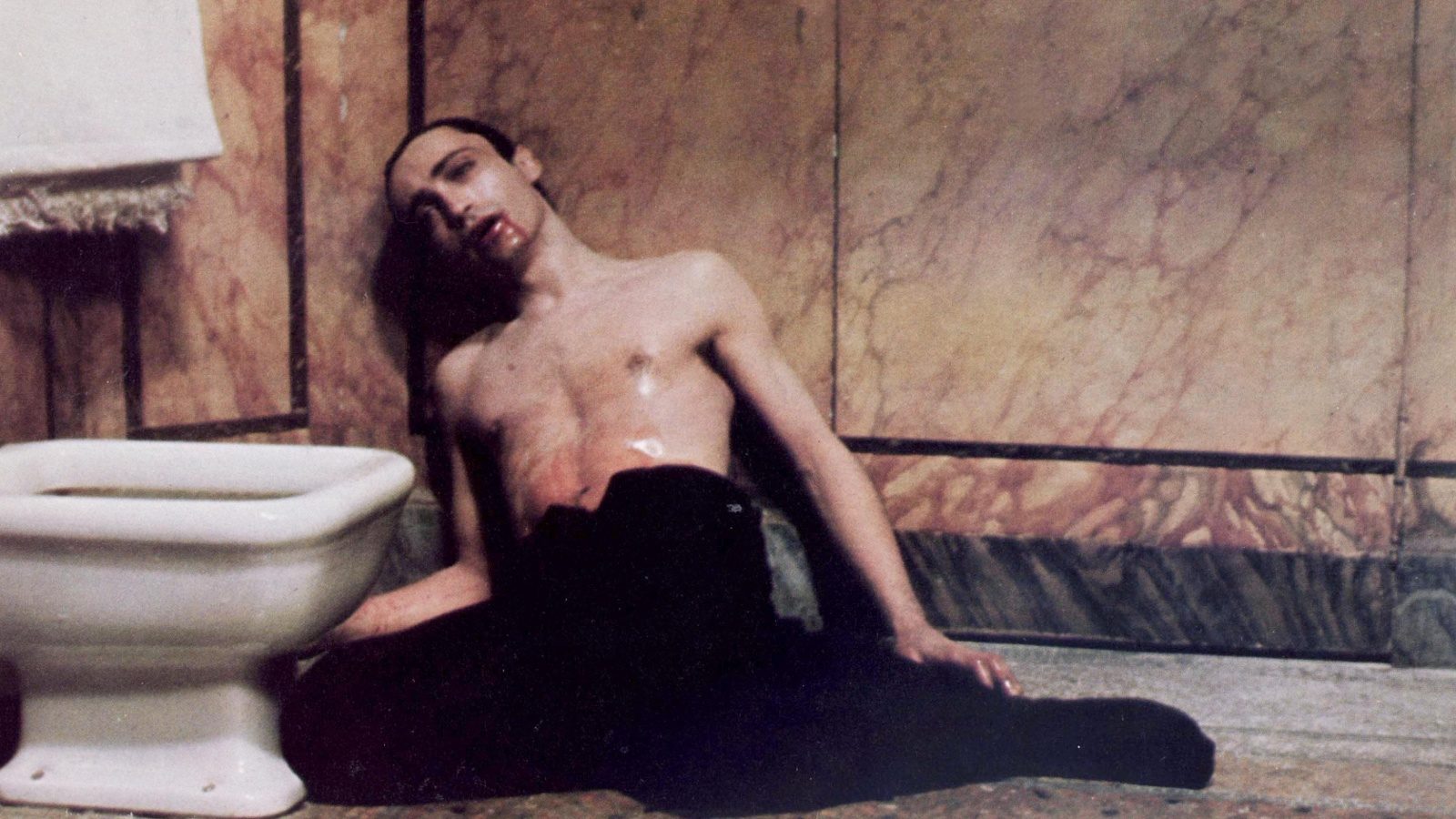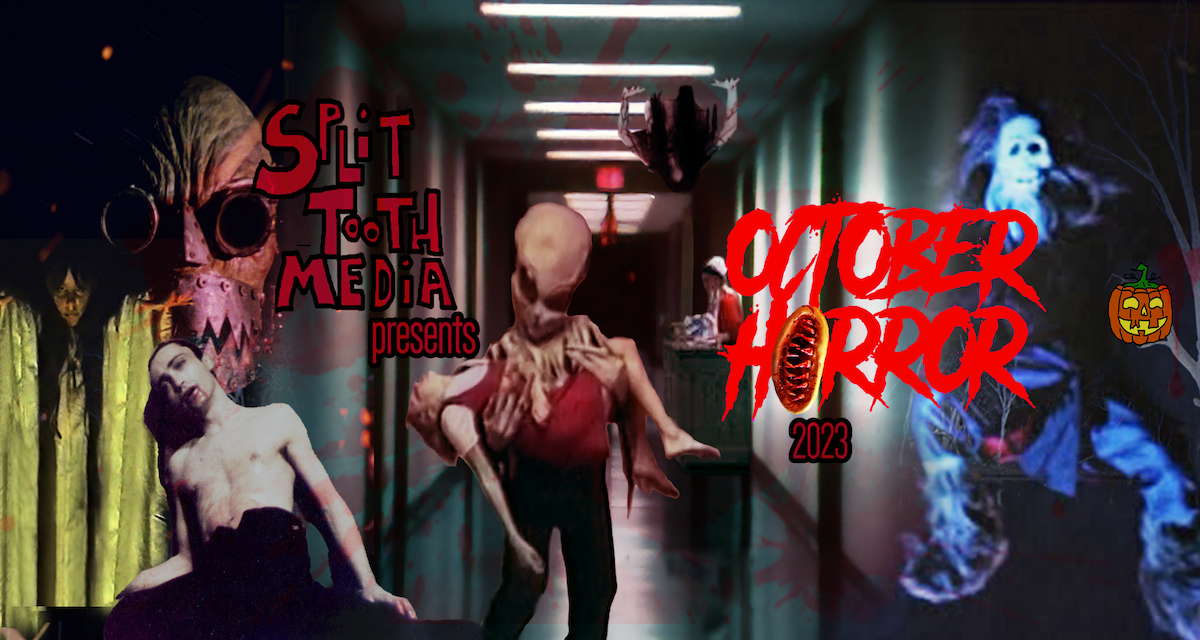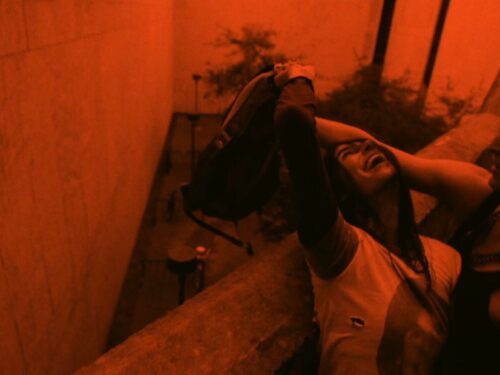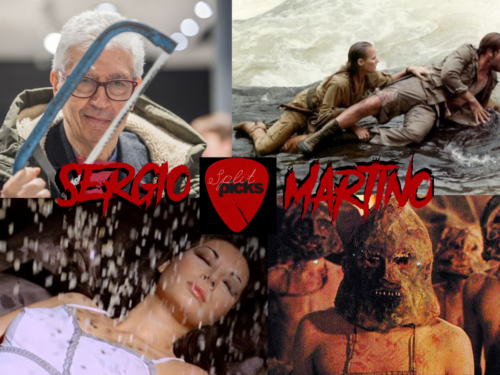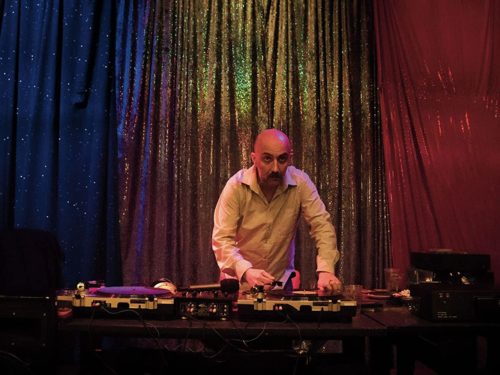Flesh for Frankenstein and Blood for Dracula found Paul Morrissey adopting genre conventions to his style in order to make period-set horror films haunted by his vision of the present
When Paul Morrissey went to Italy to shoot two horror movies back-to-back in 1973, there was a noticeable change in the way his presence was felt within his films. Before the now somewhat legendary Italian productions of Flesh for Frankenstein (1973) and Blood for Dracula (1974), Morrissey had helmed pictures that rank among the most important independent films ever produced in America. These films were made in association with Andy Warhol’s Factory, where Morrissey rose to prominence in the mid-1960s. Working closer than perhaps anyone else with Warhol during this period, Morrissey held a great deal of decision-making power in both the creative and business ventures of the studio. This was all despite, or perhaps because, Morrissey’s personality and his work ethic were antithetical to those of the scenesters and Superstars that Warhol typically surrounded himself with. Viva, for instance, referred to Morrissey as a “real nine-to-fiver,” but his resume speaks for itself: Morrissey had a role in forming and managing The Velvet Underground in their early days and brought Nico into the fold. He was also a crucial force behind Chelsea Girls (1966), the first major film effort released by Warhol. Before Morrissey gained control over the Factory’s film productions, Warhol would allow actors to let their improvisations run long and wild. This wasn’t a negative trait by any means; it was just his way. But with Morrissey making decisions behind the camera, there came a greater sense of structure to the films, which, in turn, brought out more dynamic performances from the actors and their improvisations. His most notable work during his Factory days consisted of a trilogy starring Joe Dallesandro — Flesh (1968), Trash (1970), and Heat (1972). These were films about drug-addicts, hustlers, has-beens, and never-was movie stars — eccentrics of every kind. They were stripped down, mostly one-man productions, with Morrissey running pretty much every aspect of the filmmaking process while his actors performed, without a script, before the camera.
In Italy, he arrived as an acclaimed art filmmaker from America rather than an underground artist whose films were stamped with Andy Warhol’s brand. His association with Warhol certainly didn’t hurt at that point in his career, but to this day, his work is still often misattributed to Warhol despite Warhol having little to no involvement beyond financing them. A producer, Andrew Braunsberg, had set up a meeting to discuss the opportunity of making a film for Carlo Ponti at Cinecittà. The meeting went well, well enough for Morrissey to land not one, but two films — both horror movies to be shot in 3D.1
For Flesh for Frankenstein and Blood for Dracula, Morrissey found himself working under very different circumstances. These were studio projects with large professional crews. They were also genre films set in antiquated times; not quite full-blown period pieces, but “costume films” as Maurice Yacowar, author of The Films of Paul Morrissey (1993), distinguishes them. For one thing, accuracy was not a concern. The international cast had to learn English, but they were all encouraged to keep their natural accents, most notably Dallesandro, whose Brooklyn intonations grace both films.
These also weren’t your typical genre films — they were very much Paul Morrissey films. But they offered enough of a change in setting and appearance to bring something new out of Morrissey and into his work. Where his previous films were stripped down, contemporary-set narratives in which Morrissey guided actors without imposing himself upon their performances, these Italian films were pre-scripted2 and allowed a creative distance — particularly through the lavish costumes and the genre trappings — that Yacowar says “seems to have encouraged more personal utterance.”
Morrissey plays fast and loose with the original horror tales. Flesh for Frankenstein places the mad Baron (Udo Kier) in an isolated castle with his sister-wife (Monique van Vooren) and their two eerie children. Determined to create a new Serbian master race from “zombies,” Frankenstein, with the help of his assistant, Otto (Arno Juerging), has been casting the parts for the perfect female and male bodies with stolen pieces of local townsfolk. Requiring a brain with a great libidinal drive to start his new race, Frankenstein mistakes Sacha (Srdjan Zelenovic), a pure-hearted, aspiring monk, for horny farmhand Nicholas (Joe Dallesandro), after Sacha was dragged against his will to a brothel by Nicholas. While the Baron becomes lost in his experiments, Nicholas begins an affair with the Baroness and starts catching on to her husband-brother’s crimes. The film ends in a laboratory-set bloodbath once Nicholas recognizes Sacha as the victim of Frankenstein’s experiments. The only ones who survive are the Frankenstein children, who immediately pick up where their father left off.
Blood for Dracula finds the infamous Count (Kier) running out of virgin blood to feed his hunger in his home of Romania. His assistant, the diligent Anton (Juerging again, in his finest performance), suggests going to Italy based on the country’s religious reputation. Upon arriving, they inquire at a local inn and find their way to the Di Fiores, a once wealthy, now disgraced, family made up of the Marchese and the Marchesa (legendary Bicycle Thieves director Vittorio De Sica and model Maxime de la Falaise) and their four daughters. Under the guise of searching Italy for a suitable, virginal wife for the Count to bring back to Romania, they learn there are two marriageable sisters in the family, Saphiria (Dominique Darel) and Rubinia (Stefania Casini). On either side of them is the innocent teenager Perla (Silvia Dionisio), and the eldest, Esmeralda (Milena Vukotić), a passionate, knowledgeable woman who, following a broken engagement, was forced into retreat within the Di Fiore house. Dracula is welcomed to court Saphiria and Rubinia, but, of course, Italy proves no different from the rest of the world. The two women are not as “pure” as they claim. In fact, they are both carrying on wild affairs with Mario (Dallesandro again), a manifesto-spouting Socialist handyman who claims to be sexually and politically liberated. Dracula turns both Saphiria and Rubinia into vampires when their blood proves to be tainted. Untrusting of anyone in a position of power or wealth, Mario is immediately suspicious of the Count’s motivations. And as Dallesandro’s character does in Flesh for Frankenstein, Mario helps usher in the defeat of Kier’s titular aristocrat. But Dracula — played with vulnerability and sensitivity by Kier — strikes a connection with Esmeralda, who he eventually consummates a romantic and vampiric connection with. Mario hunts down Dracula and drives a stake through his heart, which Esmeralda willfully falls on in an act of devotion.
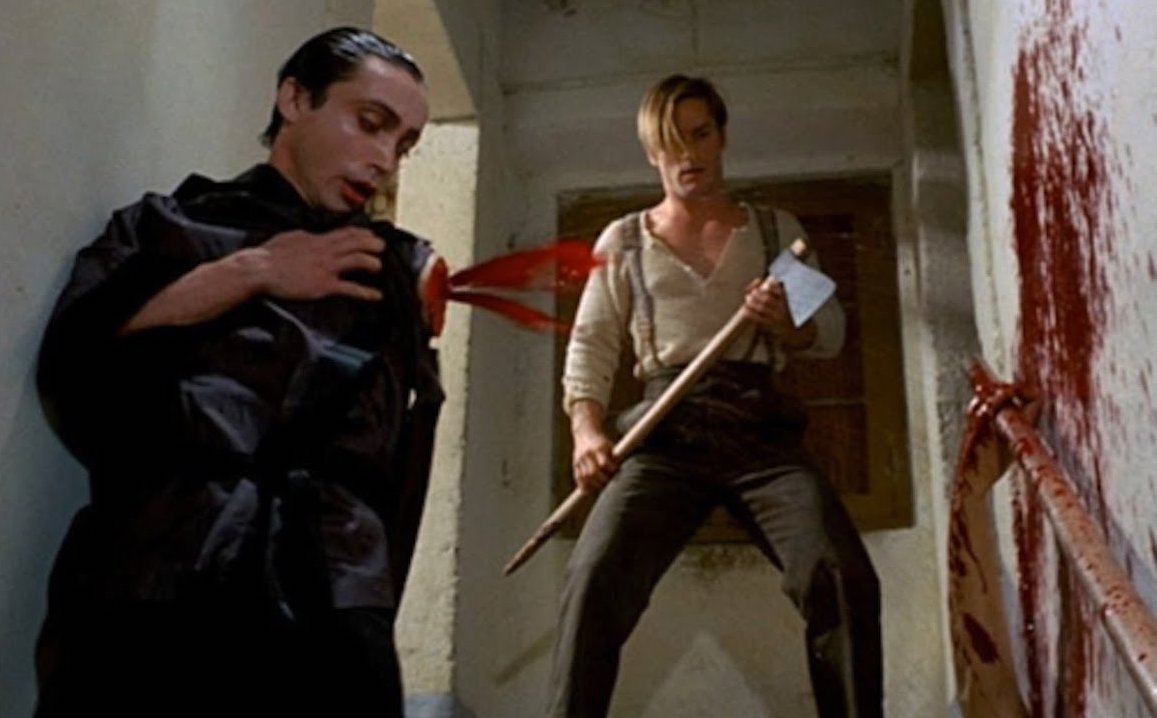
In his earlier American films, Morrissey worked brilliantly within the confines of the low-rent, no-frills productions. They were the ideal fit not only for the subject matter of Morrissey’s narratives, but also his stylistic sensibility and his worldview. But Flesh for Frankenstein and Blood for Dracula show little evidence of Morrissey having trouble adapting his ideas to a studio setting in Italy. His unifying ethical concern within his films is to “remark upon the waste of life.” Morrissey, an outspoken “reactionary conservative,” mostly describes his characters as liberal derelicts and expresses contempt for their careless and often destructive lifestyles. But when one watches his work, something else often shines through in his approach to capturing performances. Despite his right-wing reputation that he is more than willing to uphold, his casting was remarkably inclusive throughout his entire career. His best films appear more compassionate than anything else. In her 1971 review, Madeleine Harmsworth called Flesh a work of “great humanity, even of innocence.” In Trash, a movie he claims to have named because “there is no difference between a person using drugs and a piece of refuse,” his performers are given incredible freedom while Morrissey captures every eccentric detail. Look no further than Holly Woodlawn’s all-time great performance as Dallesandro’s girlfriend. George Cukor, the great Hollywood director, was so enamored with it that he instigated an Oscar campaign.
That innocence that Harmsworth wrote of shines through in the searching quality of Morrissey’s approach. He used to cast his films without auditions or tests. He would simply talk with his potential actors and decide then and there if they could work on camera. A recent Criterion Closet interview with Udo Kier, star of both Flesh for Frankenstein and Blood for Dracula, attests to this. The actor met Morrissey on an airplane and was offered the lead role in Flesh for Frankenstein based solely on their brief in-flight encounter. Even when working with a script, as he did in his two monster movies, Morrissey’s films are guided by a desire to explore his actors — their faces, their bodies, their instincts, and their desires — more so than whatever story they might be telling together. He is incredibly willing to turn his films over to his performers and their wildest tangential flights.
Now, even when “not imposing himself” on his actors, Morrissey’s voice is just as clear and personal in films like Trash and Heat. Similarly, for all of their costume elements and old-world European settings, his Italian films are just as “modern” as his New York street films. His Frankenstein and Dracula, despite being scripted studio productions, still hold that spontaneity, the present-tenseness that drives his earlier films.
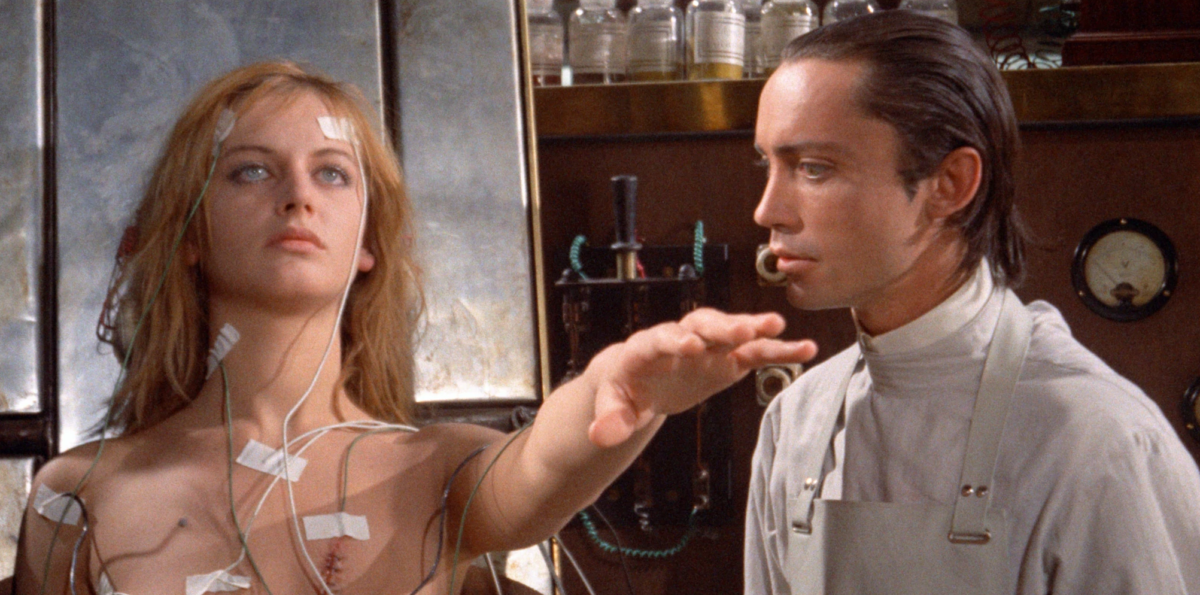
But there is a heightened urgency within them, a passion that burns a little hotter than in his previous work. And more so than any other horror movies I can think of, Morrissey’s Frankenstein and Dracula are period-set films haunted by the present. His Frankenstein insists on beauty; his Dracula is desperate for purity to survive. But their means of obtaining their ambitions and desires are perverted. These are films that cast stones at contemporary culture by situating modern attitudes and parlances into old-fashioned settings and classic narratives without merely “spoofing” them.3 This creates a new challenge for Morrissey. He faces it by allowing performances to become a little less natural, a little more stylized, in certain cases it’s almost a flatness, to suit his ideas of “the times,” those being his own. “What I was showing [in my movies] was that the second half of the twentieth century was ridiculous,” Morrissey says, “The young people were really ridiculous… Life is absurd — life is over in the second half of the twentieth century…. Life means nothing to people. The world is a toilet… it’s over.”4
Morrissey saw the left-leaning path taken by the Sixties leading hard and fast into what Yacowar calls “debilitating liberty.” He saw contemporary notions of freedom through sex, drugs, and rock ‘n’ roll breeding coldness and numbness in younger generations. Morrissey mentions in interviews that the displacement of religion and its moral compass was a great concern for him. He saw life’s very structure being disassembled — and he certainly had a front row seat for the vanguards of debauchery and self-annihilation with his proximity to the Factory scene.
Because the films being discussed are horror films, it is worth noting that Morrissey’s vision in Blood for Dracula and Flesh for Frankenstein was not entirely unlike what was being explored by other, more liberal-minded horror filmmakers of the era. Just look at George A. Romero’s output around the time of Morrissey’s monster films, particularly The Crazies and Season of the Witch (both 1973): Romero’s films at the time were exploring the way crises — both widespread (the deadly outbreak of The Crazies) and personal (a housewife’s desire for liberation from an unsatisfying domestic existence following an introduction to witchcraft in Season of the Witch) — could show how destructive and fragile the social structures of modern life really were. But where Romero is looking largely at the old guard as lost and clueless upholders of outdated rules in a fast-changing world, Morrissey sees the counterculture being just as dangerous and short-sighted.5 Morrissey charts parallels between old and new that few other films of the time registered with such a scathing vision.6
Even with Morrissey’s willingness to brush the whole world off as “absurd” and “over,” there is that fire burning inside Flesh for Frankenstein and Blood for Dracula. Morrissey has always described contemporary life as an arena of excess, destruction, and moral decay. But the very nature of his present-mindedness being placed within period horror films distinguish the aspects of human nature and culture that Morrissey took most issue with in the present as eternal battles, not just contemporary ones. Most of Morrissey’s characters in Frankenstein and Dracula are either taking the last breaths of a dying way of life or living solely for oneself in the present as the world crumbles to pieces. These films, removed from his usual contemporary setting, offer a chilly comedic vision of despair for the past, present, and future.
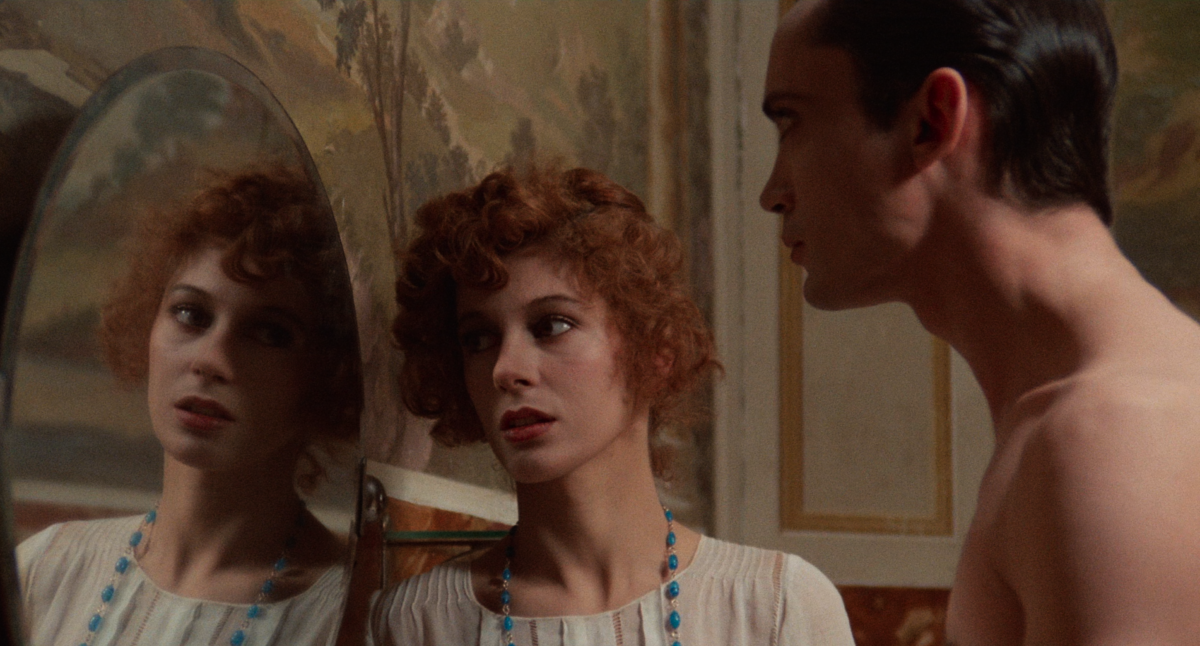
If Morrissey saw a “waste of life” in the drug-taking, sex-fueled atmosphere of the Sixties, he clearly sees parallels in the conservative urgency of his Baron’s Aryan pursuits and Dracula’s thirst for the blood of “untainted” virgins (or “wirgins,” as the Count and Anton pronounce it.) Yet, in a certain sense, Morrissey clearly relates to these desperate caught-out-of-time figures and their drives for a sense of purity. Morrissey is so drawn to the potentials and the beauty of his performers (something he discusses in great detail throughout nearly every interview and a trait that performers such as Dallesandro have felt objectified by7), but he finds the contemporary world that they inhabit and its general (lack of) ideals to be poisonous. Like his mad doctor and pure-blood thirsty vampire, he often speaks as if he desires and craves an impossible chiseled-marble form of perfection in his actors, while what he most often displays is beauty being mistreated or degraded. Dallesandro’s roles, most notably in Trash, are of Adonis-like studs struck with impotence or knocked unconscious from addiction. Morrissey puts beauty through the wringer as he explores the various ways the world abuses it.
But another question is raised when the rare character in a Morrissey film actually lives by a code of purity, as the aspiring monk Sacha does in Flesh for Frankenstein. Morrissey presents him as stoic to the point of blankness. He speaks of wanting to become a monk, but doesn’t seem to care much about what that would actually mean. He seems incapable of expressing passion of any kind with his affectless demeanor. This monk, who becomes the final victim of Dr. Frankenstein’s experiment, is treated like a Bresson model dropped into a Visconti film — coolness in a hot world. When the pure Sacha is placed within the ribald, colorful walls of the brothel, with lizards crawling over naked flesh and sounds of laughter ever present, purity feels boring and lifeless within the mess of vibrancy.
But Morrissey thrives in mess: He finds the strangest ways of wrangling humanity out of his art. In these films, he presents characters who should, by most any other movie’s law, be considered clearly “heroic” or “villainous,” and mixes everything up so we have to take a step back to recognize certain complexities. Despite his own views, he sees politics as an escape. Often, the most outspoken or “forward-thinking” political thinkers in his films are as hypocritical, destructive, or dangerous as his monsters or drug addicts. Social workers in Trash become just as “junk”-obsessed as his junkies, and figures like Dallesandro’s Mario in Blood for Dracula — more on him shortly — are even crueler in their intentions and less deserving of our sympathies than the titular blood sucker. In fact, part of what makes these films more than just ribald schlock is Morrissey’s willingness to recognize his Frankenstein and Dracula as everything from monstrous to downright pathetic as they navigate his toilet world. There is a longing for the past, but the relics and figures that represent the past in Morrissey’s films are far from worthy of blissful nostalgia. They are shamed, ruined, or outcast; if not evil, they are delusional or corrupt. Their futures look bleak amid the films’ comedic overtones.
His characters — all but a few — do objectionable, deplorable things. Dallesandro’s Mario, for example, is clearly the figure who, in any other film, would fill the role of the hero. He speaks openly about his desires for a new world order and a better tomorrow where everyone gets an even shake; he is immediately suspicious of the Count and his intentions with the Di Fiore daughters. Mario even saves the day at the end by slaying the vampire and rescuing Perla in order to return with her to the castle as the credits roll, presumably to begin work on that new future he has spoken so often about. But he doesn’t act much like a hero; his manner is off throughout the whole film. He speaks of overthrowing the corrupt elites, while he beds two of the aristocratic Di Fiore daughters nightly — often having them both at the same time and physically abusing them on top of it. When Saphiria tells him that she loves him, he becomes immediately disengaged and cruel. Mario also speaks without hesitation of his desires to rape their younger teenage sister. He eventually gets his wish at the end of the film, during his “hero” turn. He learns of Dracula’s need for virgin blood and tells Perla he must take her virginity to keep her safe. Perla doesn’t even have a second to consent before he has started. (When her mother catches them, she is concerned less about what Mario has done than with the fact that he is merely “an employee.”) Mario may speak of the corruption and the violence of the wealthy elites he waits to see overthrown, but he is equally corrupt, if not more so, through his actions.
Morrissey holds nothing back in showing this either. He isn’t merely — as some modern viewers presume — including a rape scene for shock value. In our current era, where context means nothing to many viewers and studios aim for little else than to keep audiences well within their comfort zones, Morrissey’s films stand in stark, often vicious, contrast to the films people consume these days. Morrissey is not presenting a socially fashionable vision of what the world should be through his social critiques; he seems to recognize the ship has sailed. Instead, he is calling everyone on their downfalls — the rich and the poor, the liberal and the conservative. Morrissey has an unrivaled ability to draw parallels between his characters of all types and walks of life. No one is off the hook, yet his attraction to the eccentric beauty of his performers ultimately makes his films feel somewhat loving as they damn the world and all its inhabitants.
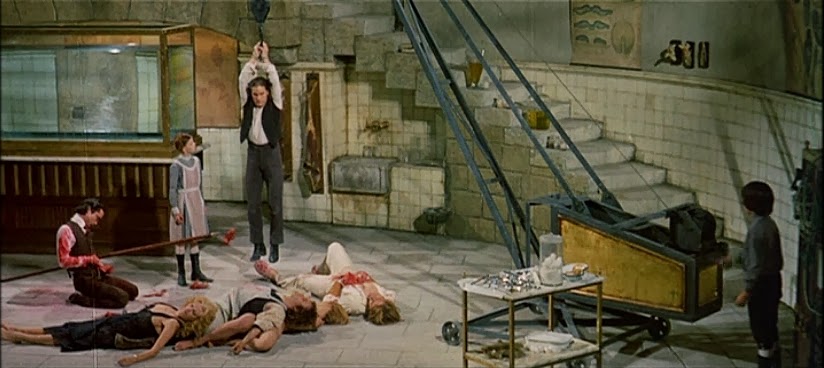
Morrissey’s monsters don’t set out to be monsters. They have their reasons, no matter how twisted they may be: for Dracula, it was the unfortunate circumstance of being turned into a bloodsucker; for Frankenstein, we see scientific ambitions deranged by a deadly mixture of rejection, isolation, and social and racial prejudice. Flesh for Frankenstein reflects brutally on the pursuit, and the cost, of reproducing beauty. The Baron is motivated by beauty as an ideal, not as a reality. The reality is everybody and every body is imperfect and blemished, but his notions of what needs to be corrected to reach perfection are sinister. He tells a story of seeing a beautiful peasant girl as a child. He was drawn by her appearance, but repulsed by her foreignness and her status as a social lesser-than. His experiments are aimed at creating human life that is ultimately stripped of humanity — beautiful flesh remade as stone-cold artificiality.
We are given points of reflection throughout the film that complicate Frankenstein’s efforts to reproduce the human form in an ideal state in his lab. Morrissey’s sets are filled with artistic renderings of the human body. The stone-carved elegance of nude sculptures and the clinical precision of medical dummies fill the wide frames of Frankenstein’s laboratory, while naked, bloodied corpses are strewn across the ground — the waste of his efforts. When Dallesandro’s Nicholas beds the Baroness, the camera pans across their actual, writhing nude bodies to a painting of Adam and Eve before reaching a mirror’s reflection of their lovemaking. Morrissey heaps another layer upon the scene by showing the mirror to have peepholes through which the young Frankenstein children watch the two lovers from the shadows. Every character in the film is seeking some form of flesh, whether breathing or not, admiring it with distant hearts and minds. As they pursue their own notions of perfection or draw pleasure from other bodies, they act with detachment and derangement. Frankenstein’s own relationship to his patchwork reproductions turns ribald and physical. He strikes through their surfaces and penetrates his own stitch work for sexual satisfaction that he clearly doesn’t get from his actual wife. It’s the reflection that is desired, not the real thing.
Morrissey may speak as if he has completely written off modern life, but, within his films, he appears to be asking what love and beauty mean in a world that treats them with such a disposable attitude. As Frankenstein’s laboratory fills with disposed bodies and severed limbs in his search for the perfect pieces for his specimen, Morrissey asks what’s to be done for all this useless beauty? As Frankenstein is dying, he screams about how he refuses to die “in wain [sic],” but he was already living in it. Only in his death, posed among his stack of failed zombie creations and the casualties of his experiments, does he become a part of something resembling perfection. Morrissey ends the film with the tragic scene rendered like one of the large-scale paintings that adorn the walls of the castle. Frankenstein becomes a statuesque representation of demented hubris undone; a felled experimenter pierced by trident within a grand canvas, in a pose that more than slightly resembles James Earle Fraser’s End of the Trail. The paintings and statues that adorn the Frankenstein castle are works of artistic expression, attempts to capture poetic moments, and feelings and gestures of beauty — no matter how fleeting. (The painting above the Baroness’ bed captures Adam and Eve just before The Fall.) Morrissey’s composition is certainly a well crafted one, but any beauty in its framing is overwhelmed by its black-as-night humor. The absurd grandiosity of the widescreen frame and the 3D presentation casts a morbidly extravagant portrait of Morrissey’s waste.
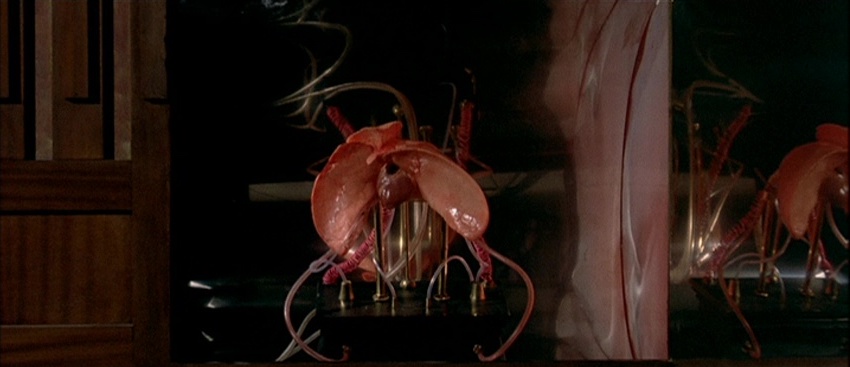
As noted by others before, mirrors — both literal and in each film’s structure — play major roles in Flesh for Frankenstein and Blood for Dracula. Morrissey has a unique ability of drawing parallels between characters and scenes that bring surprising potentials and new questions to the fore. He begins and ends each of his horror films with contrast points that might not initially seem united, but when considered together, bring us closer to the heart of each film. In the case of Flesh for Frankenstein, this involves a literal hidden, beating heart. The film’s credit sequence opens with the vision of a spider — its legs spread wide as it descends from its web towards the camera in 3D. The final scene includes an opposite gesture: A dolly shot pulling in towards an exposed heart and lungs kept by Frankenstein in a mirrored cabinet. Normally concealed within his laboratory, the splayed out heart pumps away. Yet through its naked display, it takes on an abstracted, alien form. It resembles the spider in its shape, particularly through Morrissey’s framing and the movement of the camera. But where the spider introduces the foreboding presence of death, the heart holds a potential for life recast under a strange light. Shut away in its case, plugged with a tangle of cords to sustain it in its detached state, its beat has been transformed into something otherworldly. It pumps on diligently though, surviving while everyone in the film destroys each other.
In Blood for Dracula, Morrissey gives us a more affecting frame of contrasts. Using the Count and Esmeralda, the oldest, single Di Fiore sister, he creates a similar parallel between signs of death and life — death being hidden away and life exposed. Blood for Dracula immediately draws us to its interest in surfaces and appearances. The film opens with an extended sequence of the ageless Count applying makeup and painting over his white hair. It’s an alert towards the artificiality, not only of the film itself — like the spider, this too takes place under the credits — but of the world its characters inhabit. Its characters live to pose. Mario has his political rhetoric, spouting the words like gospel while raping and abusing those around him. The wild Saphiria and Rubinia strike “worker” poses with their shovels in the field while exposing their breasts in a careless mockery of the working class.8 There is an emptiness to the way most of the characters present themselves. The film’s opening most clearly aims to draw us to the hollowness of appearances that will follow when it is revealed that Dracula has been making himself up before a mirror into which he casts no reflection.
Throughout the rest of the film, shallowness overwhelms all. Few characters have a genuine spark of life in them. De Sica’s Marchese is a deeply romantic figure, a flawed man, for sure, with his irresponsible gambling habits, but truly one of the few lover’s of life in all of Morrissey’s work. Morrissey allows for him to overtake scenes with poetic monologues — the most memorable being when he reflects on Dracula’s name, rolling various pronunciations off his tongue over and over. Just as he is reaching the heights of his fancy, his wife coldly cuts in to chop him down to reality — that being the potential for money-getting and the elevated social status of marrying a Romanian count.
Esmeralda invites another dimension of great emotional capacity into the film. Where her father has no grounding in social or economic realities, she appears to have learned the hard ways of the world while retaining a quiet passion. Esmeralda is a woman whose moment passed her by; Time stops for no one, and the circumstances of her abandoned engagement left her in a position to be shut away within the family home as a spinster. As her mother notes, she spends most of her time reading and studying in the library. Of course, the townsfolk have made up their own opinions, most notably the innkeeper who refers to her as a “whore” without any regard for her story. Esmeralda shows an immediate attraction to Dracula upon his arrival. They are both figures who have been cast out of time. Within this film where most everyone treats each other terribly, the connection that eventually blossoms between her and Dracula appears to be genuine. Both believe in a sense of tradition and its upkeep, despite the odds against it. Both are lost in the world as it pummels forward without them. Between them, real love does appear to have a chance in Morrissey’s world. But it is fleeting and heaped with so many pressures from uncaring and destructive forces that the only potential it has to carry on is through vampiric means — to live as one in a ghastly afterlife on Earth sustaining themselves by feeding off, and destroying, purity. It is also worth noting that in a film of incredibly frank, almost XXX depictions of sexuality, Morrissey completely skips over the consummation of their romantic and vampiric union. The absence of the scene is especially crucial considering it would’ve been featured between the graphic scene of Mario’s “heroic” taking of Perla’s virginity and one of Saphiria and Rubinia being discovered in an incestuous embrace by their mother. Its absence builds a strange new standard within the film, as if Morrissey wants to keep something sacred.
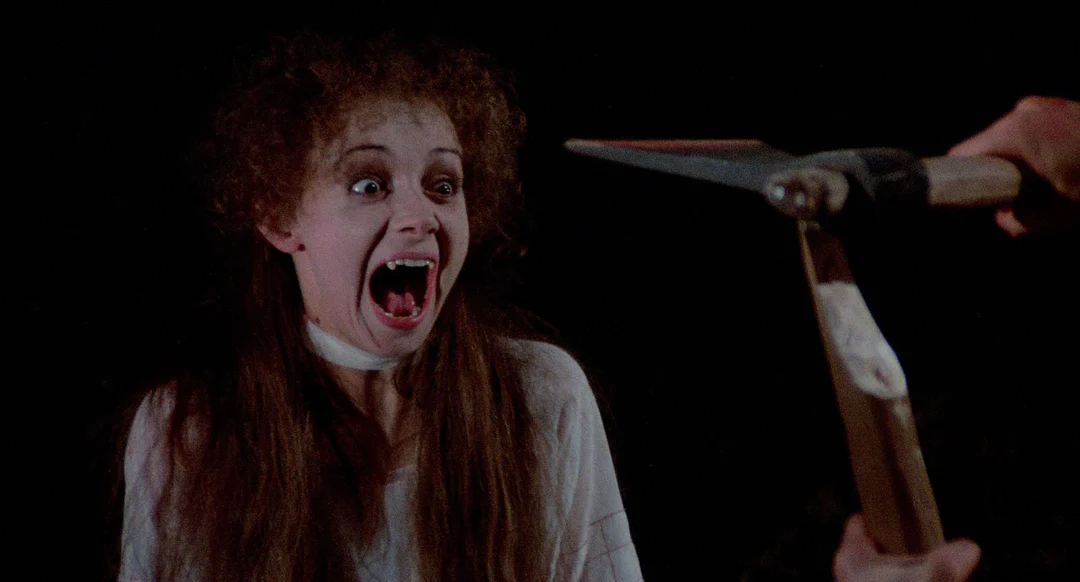
But the final moment in question, relating to these parallels drawn by Morrissey, comes at the very end. The Count has turned Esmeralda in order to live together for eternity as vampires. When she reveals herself to be bitten just before Mario drives Dracula’s heart with a stake, she lets out a blood-curdling scream. Within its bizarre context, her cry is an uncomfortably beautiful moment packed into a film that has mostly overwhelmed us with ugliness and cruelty. It is both the most extravagant and the most devastatingly emotional moment in perhaps all of Morrissey’s films. The nakedness of her performance and the sheer volume of that shriek pierce through the costumed surface and the genre trappings to something that, within this film of such hollow characters, empty desires, and violence, registers on an alien plane of feeling. Esmeralda’s sudden display of undying affection stands for the sole connection built within the film that isn’t rooted merely in sex, indulgence, or a desire to climb the social ladder. What we are witnessing as she cowers over her disarmed Count is the death of Morrissey’s only lovers left alive. The film begins with decaying flesh being painted over. It ends with a last gasp for the potential of humanity in a pair of undead lovers.
Much like the heart beating in the cabinet at Flesh for Frankenstein’s end, just before the children take up the torch to continue their father’s experiments, Esmeralda graces Blood for Dracula with a glimpse at its own heart. Morrissey ends both films with brief, absurd, and tragic visions of love and life’s very rhythm. Hidden away throughout each film, they are revealed to be barely holding on and sustained through unnatural means. But Morrissey shows that for these potentials for hope among all the corruption to survive at all may be all that we can hope for.
This all means little for the deranged Frankenstein children and Mario, who ushers young Perla back into the house to assume control now that her family has been wiped out. The survivors of Morrissey’s monster movies are just carrying on. For Morrissey, the 1960s were the beginning of the end and it has been a long, painful death. His humor goes hand-in-hand with his anger and disappointment. Even in interviews, while speaking so bitterly about the world, he has something like a twinkle in his eye as his words tear everything apart — like he relishes the fact that his opinions will unsettle most of the people who enjoy his films. Both Flesh for Frankenstein and Blood for Dracula leave us with a devastating vision of the world; a vision that is uncomfortably clear-eyed and delivered with both a comedic and biting touch as new world orders take root and threaten to be more or less the same as it was before, just with less room for feeling. Sometimes, all you can do is laugh at the horror of it all.
Purchase Flesh for Frankenstein and Blood for Dracula
Find the complete October Horror 2023 series here:
(Split Tooth may earn a commission from purchases made through affiliate links on our site.)
- Only the first, Flesh for Frankenstein, ended up using the technology.
- According to Morrissey, he still wrote almost everything in a way that allowed spontaneity to play a part. His approach to these films was to write scenes the night before they were shot. At one point, he was writing the script for Blood for Dracula while still finishing photography on Flesh for Frankenstein.
- As opposed to Morrissey’s unfortunate adaptation of The Hounds of the Baskervilles, made a few years later in 1978. You can read more about that film here.
- Cut for space in the above quotation are Morrissey’s direct references to the kids of the current sex, drugs, and Rock ‘n’ Roll generation being slaves to “the bosses” — “Christian-hating, Soviet-worshiping” overlords who were guiding society into the gutter in Morrissey’s eyes. While his conservatism certainly shows through in his comments, there is also a streak of anti-authoritarianism here; a view of how the masses can get swept up in the culture of trends (aka money) that now looks somewhat ahead of his time. His films show that he saw the sexual revolution rather clearly as an excuse for many people to adopt the image of the free-love counterculture in order to act badly and selfishly.
- It’s worth noting that Season of the Witch features a character not unlike Dallesandro’s Mario in Blood for Dracula, a hippy who declares himself to be free and liberated but carries with him many of the same destructive and misogynistic attitudes of the older generation he claims to stand against.
- Romero’s Martin shares some interesting parallels with Blood for Dracula as well: delusions relating to one’s place in contemporary times; Figures caught in destructive life cycles whose habits take on the appearances of modern sexual and drug addictions; The idea of being trapped by old world myths and legends that struggle to be translated into a cold and brutal modern world. Bennett Glace wrote an incredibly insightful piece on the film for a previous October Horror series.
- Morrissey on casting Blood for Dracula: “The girls were beautiful… being educated with Hollywood films, people had to be good-looking in front of the camera. What’s the point if they’re not good looking, especially the girls?”
- The scene appears to be a parody of the pulpy Neorealist classic Bitter Rice (Giuseppe De Santis, 1949).

